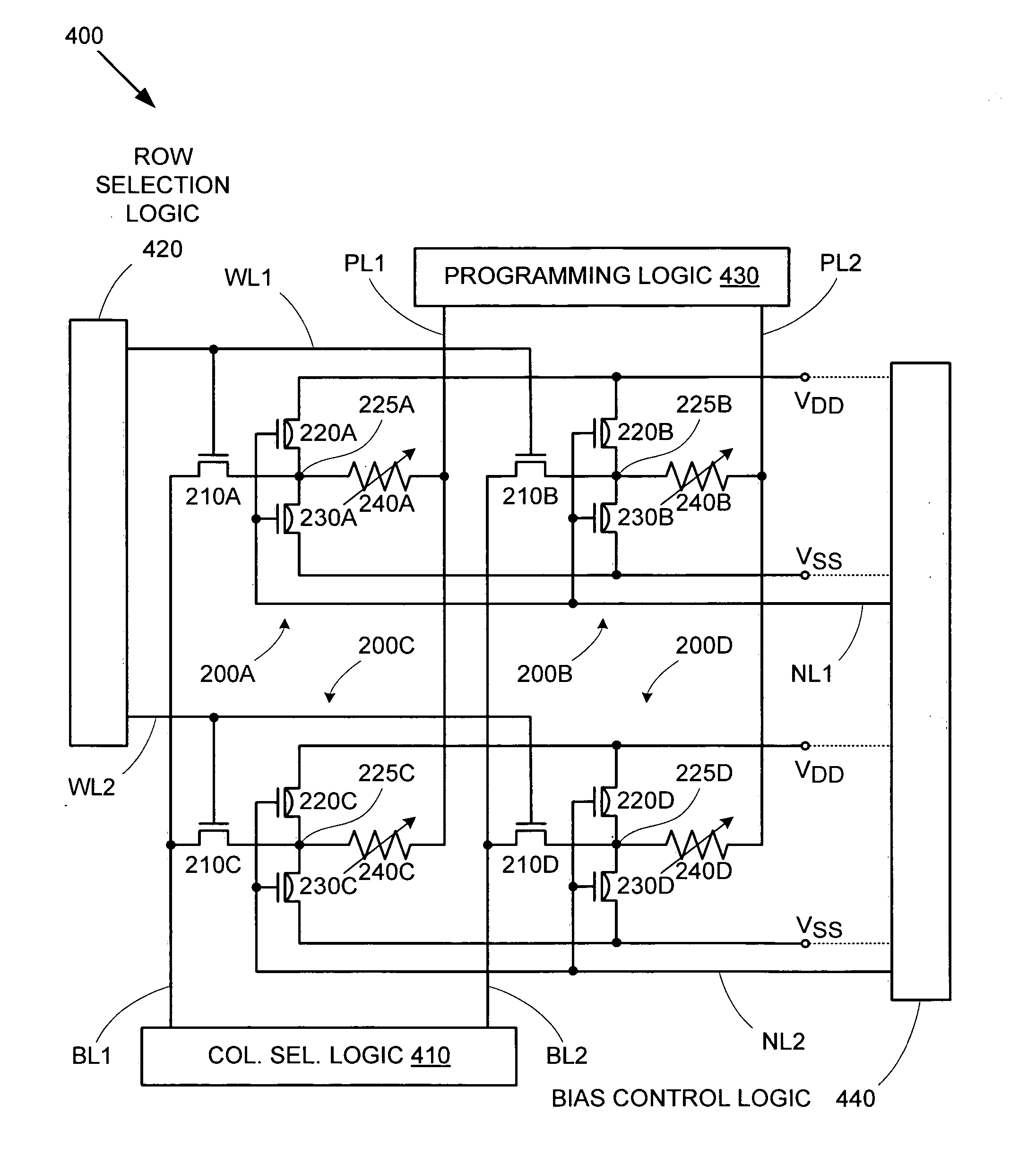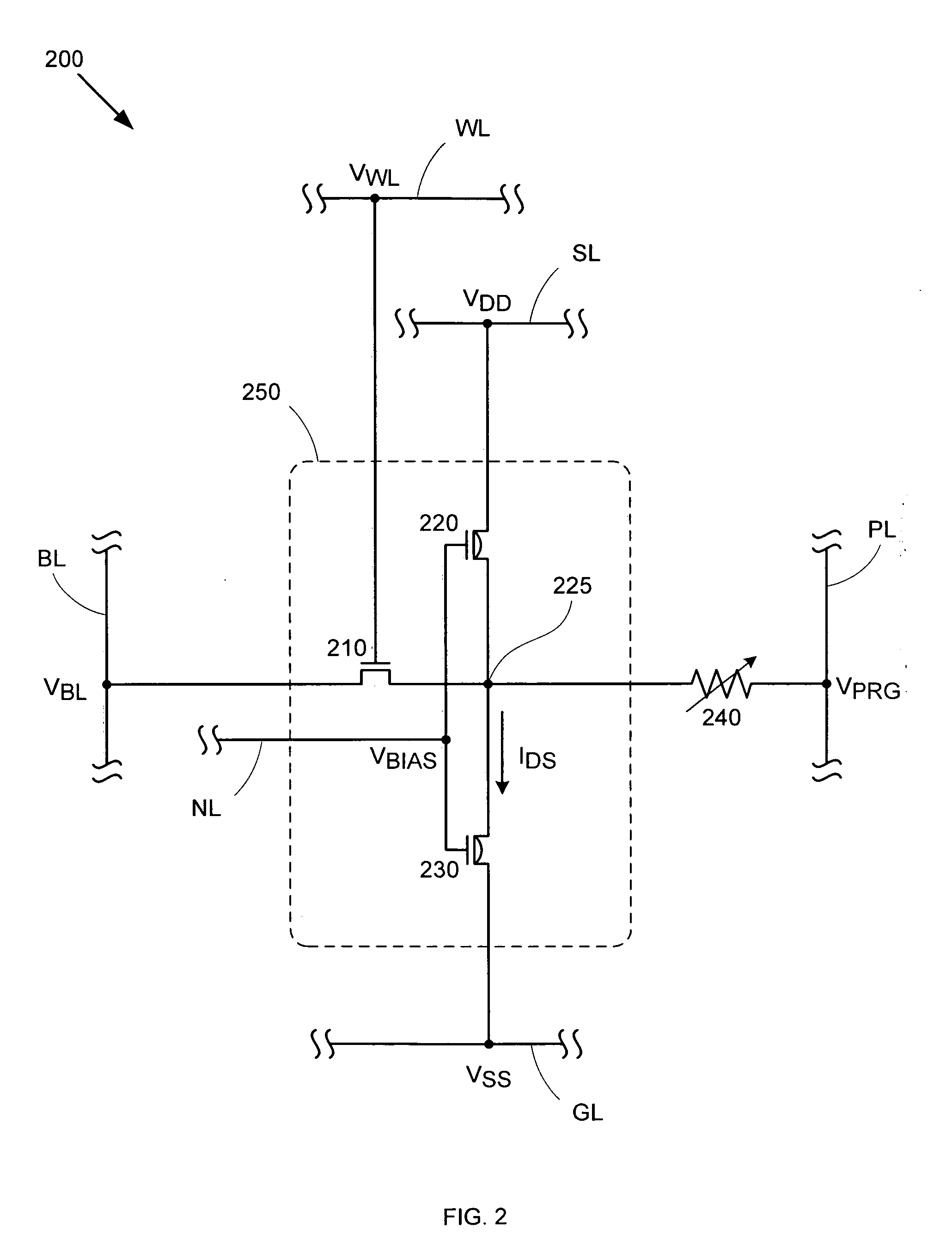Compact static memory cell with non-volatile storage capability
- Summary
- Abstract
- Description
- Claims
- Application Information
AI Technical Summary
Benefits of technology
Problems solved by technology
Method used
Image
Examples
Embodiment Construction
[0027] Conventional SRAM cells provide high-speed data access, but are unable to retain stored data once power is removed. Adding floating gate transistors to such SRAM cells can provide non-volatile data storage behavior, but at the cost of increasing overall cell size and fabrication process complexity. However, by incorporating programmable resistors into layers above (or below) SRAM cells (e.g., metallization layers), non-volatile storage capability can be provided without increasing cell layout size.
[0028]FIG. 2 shows a schematic circuit diagram of an embodiment of a non-volatile SRAM cell 200. Non-volatile SRAM cell 200 includes an SRAM circuit 250 and a programmable resistor 240. Programmable resistor 240 is connected between a program line PL and a (data) storage node 225 in SRAM circuit 250. Note that for exemplary purposes, SRAM circuit 250 is depicted as a “3T” SRAM cell that includes n-channel transistors 210, 220, and 230. However, according to various other embodiment...
PUM
 Login to View More
Login to View More Abstract
Description
Claims
Application Information
 Login to View More
Login to View More - R&D
- Intellectual Property
- Life Sciences
- Materials
- Tech Scout
- Unparalleled Data Quality
- Higher Quality Content
- 60% Fewer Hallucinations
Browse by: Latest US Patents, China's latest patents, Technical Efficacy Thesaurus, Application Domain, Technology Topic, Popular Technical Reports.
© 2025 PatSnap. All rights reserved.Legal|Privacy policy|Modern Slavery Act Transparency Statement|Sitemap|About US| Contact US: help@patsnap.com



